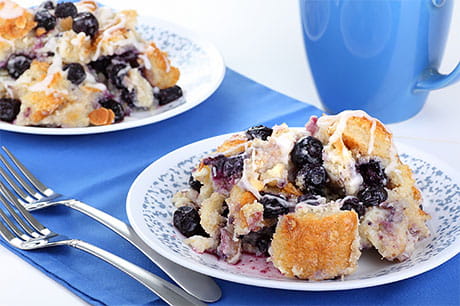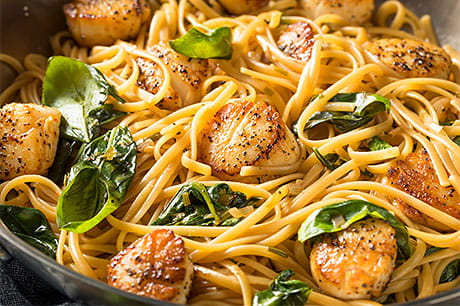Recipe: Apple tuna sandwich
Looking for a healthy sandwich recipe? This one is balanced with carbohydrates, protein and fat as a healthier alternative to some traditional types.
By Ame Golaszewski, RDN
Sandwiches are tasty, convenient and easy on-the-go meals. They come in many different shapes and sizes and typically contain all three macronutrients: carbohydrates, protein and fat. But when we think of the sandwich, it’s easy to picture lunch meats, cheese, lettuce and tomato stacked together with sauces or spreads between two slices of bread.
While many people find these “traditional” sandwiches delicious, they are often low in fiber, have a significant amount of calories, sodium and fat, and may not be the healthiest choice for a meal.
But, with simple adjustments to the type of bread — and what you put between the slices — you can greatly improve the overall nutritive quality of your sandwich.
Here are some tips to make your sandwich a healthier one:
Rethink your sandwich carbohydrates
Choose whole grain over white bread products. Whole grain bread, wraps or pita bread contain the entire grain, which provides many important nutrients needed for cell function and metabolism, such as:
- Thiamin (vitamin B1)
- Riboflavin (vitamin B2)
- Niacin (vitamin B3)
- Folate (vitamin B9)
- Iron
- Magnesium
- Selenium
Besides these essential nutrients, whole grain bread offers more dietary fiber than white flour products. A diet high in fiber can lower cholesterol levels and decrease your overall risk of heart disease, stroke, obesity and Type 2 diabetes.
Fiber also increases satiety, or the feeling of being full — which may mean you consume less calories. Potato bread provides comparable protein and fiber to whole grain bread. It has more calories per slice and significantly higher potassium than other breads.
Vegetables are a great low-calorie, high-fiber addition to any sandwich. Consider adding spinach, onions, mushrooms, peppers, shaved zucchini, carrots, cabbage (coleslaw), avocados or celery to increase the fiber and overall nutrition of your sandwich.
For an unusual twist, consider filling out your sandwich with fruits such as apples, apricots, sliced grapes or cranberries, which offer a sweeter taste (as well as fiber).
Pack your sandwich with proteins
If lunch meat is the main ingredient of your sandwich, choose low-sodium and low-fat roasted turkey breast or chicken breast lunch meat.
Reusing your leftovers, including lean meats such as pork, chicken breast, turkey breast or roast beef, can offer increased variety as well as protein. Salmon, tuna fish or eggs (without mayonnaise) are also great sources of protein.
But beware: Lunch meats such as ham, turkey, bologna, salami or pastrami are not only high in fat, calories and preservatives, but they can give you a whopping 250 to 600 mg of sodium (11% to 26% of the recommended daily value of sodium per 1-ounce serving).
Find healthier fats
Regular mayonnaise, cheese spread, creamy dressing or marinade will increase the saturated fat, sodium and overall calories of your sandwich. Calorie-dense diets high in saturated fat can increase your cholesterol levels as well as increase your risk of heart disease and stroke.
When possible, choose light, low-sodium or reduced-fat varieties of these condiments and use small quantities to enhance the flavor of your sandwich.
A general rule: Any source of fat added to your sandwich should be used sparingly.
Unsaturated fats such as olive oil, nut butter or avocado provide healthier sources of fat — and flavor — to your sandwich. Unsaturated fats can lower cholesterol and are a benefit to your body when consumed as part of a healthy diet.
Next steps:
Looking for more? Explore our dietitian-approved recipes
Want to meet with a nutritional specialist? Find a nutritionist near you
Apple tuna sandwiches
This is a heart-healthy and diabetes-friendly alternative to the traditional sandwich.
Makes: 3 servings
Ingredients
- One 6.5-ounce can tuna, packed in water
- 1 apple, peeled and cored
- ¼ cup low-fat vanilla yogurt
- 1 teaspoon mustard
- 6 slices whole wheat bread
- 3 lettuce leaves
Directions
- Chop the apple into small pieces.
- Drain the water from the can of tuna.
- Put the tuna, apple, yogurt and mustard in a medium bowl. Stir well.
- Lay out 3 slices of bread. Spread ½ cup of the tuna mix on each.
- Top each sandwich with a lettuce leaf and a second slice of bread.
Nutrition information per serving (one sandwich): Calories 370, fat 6 g, sodium 360 mg, carbohydrate 57 g, fiber 7 g, protein 23 g
Recipe adapted from ChooseMyPlate.gov.





